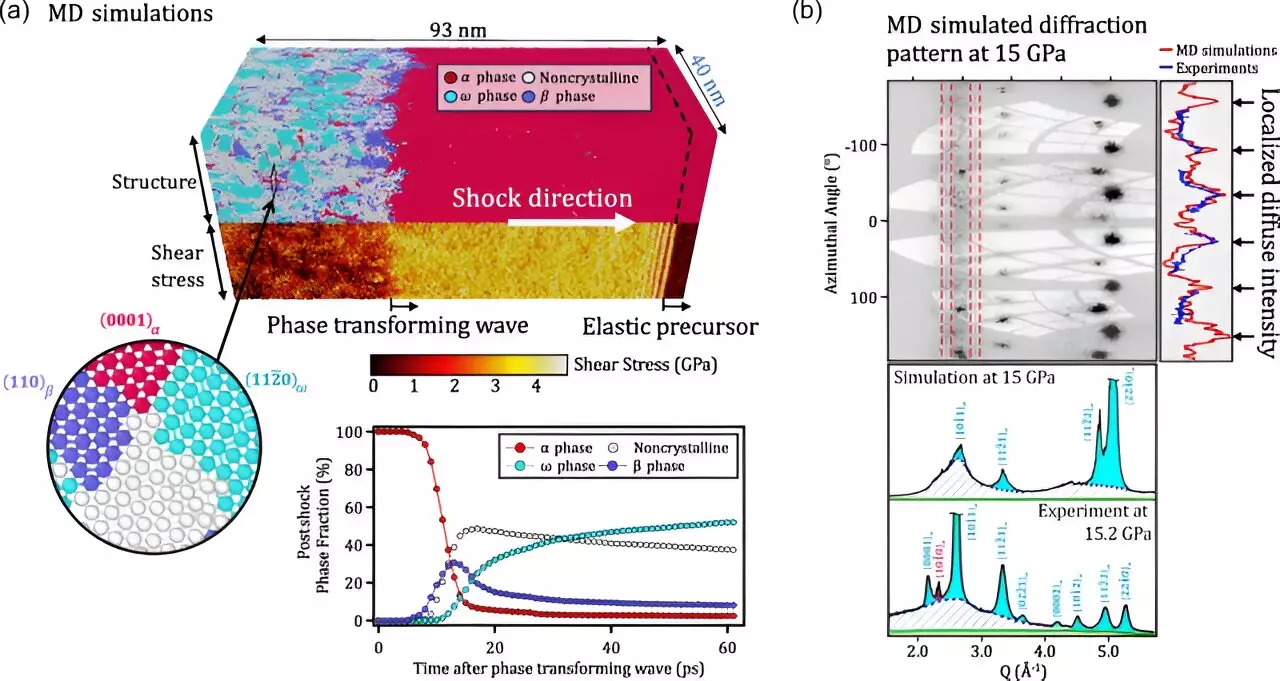In the realm of modern technology, the choice of materials is not merely a matter of preference but a cornerstone that dramatically influences performance, safety, and sustainability. This is particularly true for applications in extreme environments, such as nuclear energy systems and military operations, where materials must endure not only intense pressure but also extreme temperatures and corrosive conditions. As we stand on the precipice of technological advancements, the necessity for materials that are not just resilient but also cost-effective and lightweight becomes increasingly significant. An intriguing breakthrough in this field comes from research conducted at the Lawrence Livermore National Laboratory (LLNL), which examined the behavior of zirconium—an essential alloy in nuclear reactors—under extreme pressure.
The research investigated single crystal samples of zirconium, revealing unexpectedly intricate deformation patterns when subjected to high pressures. Dislocation slip, crystallographic twinning, and other mechanisms that usually characterize the behavior of metals were observed to work in tandem, leading to a diverse array of outcomes. Lead author Saransh Soderlind emphasizes the necessity of understanding these microscopic mechanisms to create reliable predictive models for how materials respond under stress. This knowledge is invaluable, given that all metals undergo permanent shape changes due to defects known as dislocations; however, zirconium surfaces additional perplexities due to modifications in its crystal structure under compression.
One noteworthy aspect of this research was the employment of cutting-edge experimental techniques. The team utilized femtosecond in-situ X-ray diffraction, allowing them to observe dynamic behavior in single-crystal zirconium compressed to high pressures over nanosecond timescales. These observations revealed atomic disorder, a condition previously undocumented in elemental metal, alongside multiple pathways for crystal structure transformations. The novelty of these findings lies in their exclusivity to single-crystal zirconium, as these phenomena were absent in polycrystalline forms of the metal.
The implications of these discoveries extend beyond zirconium. According to LLNL scientist Raymond Smith, the intricacies showcased in zirconium’s deformation behavior under pressure likely exist across a wide array of materials. By employing multi-million atom molecular dynamics simulations, reinforced through machine-learned potential, the researchers could corroborate their experimental findings accurately. Such detailed insights form a substantial base for future studies aimed at developing innovative materials capable of maintaining integrity in demanding environments.
Zirconium alloys, prized for their strength and low neutron absorption, are pivotal in the nuclear industry as fuel rod cladding. The insights from this research could pave the way for improved performance and safety in nuclear applications and other industries requiring materials that can withstand extreme conditions. As the quest for stronger, lighter, and more sustainable materials continues, this study not only enriches the understanding of material science but also sets the stage for advancements that could have profound impacts on multiple sectors, from energy to defense and beyond.
The investigation of zirconium’s behavior under extreme conditions exemplifies the complexities inherent in material science and underscores the importance of advanced research methodologies in unlocking new frontiers of knowledge.

